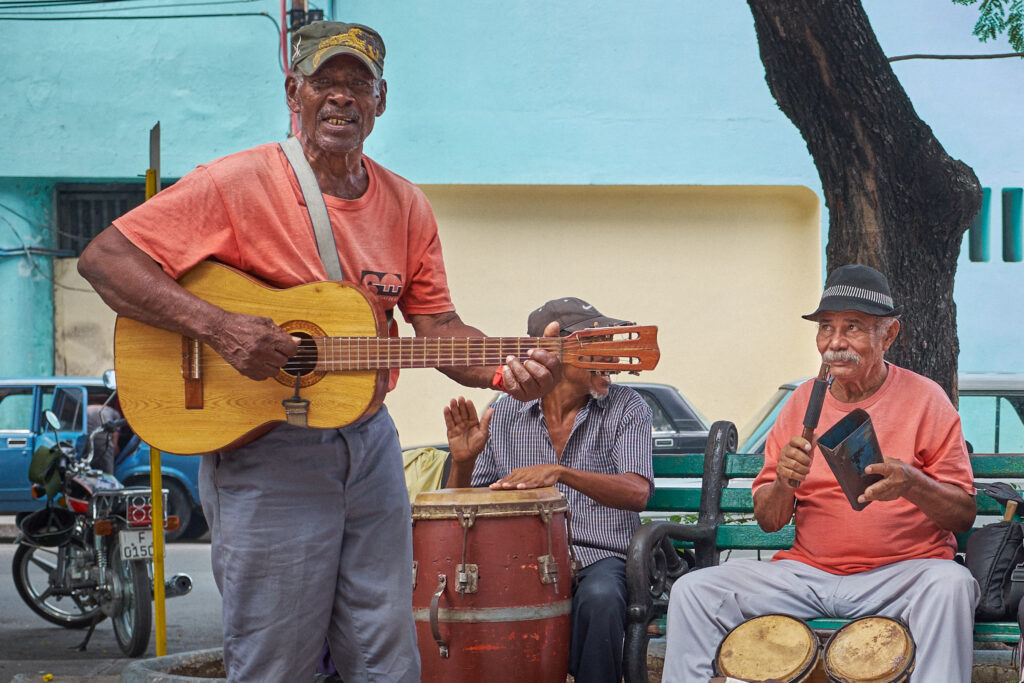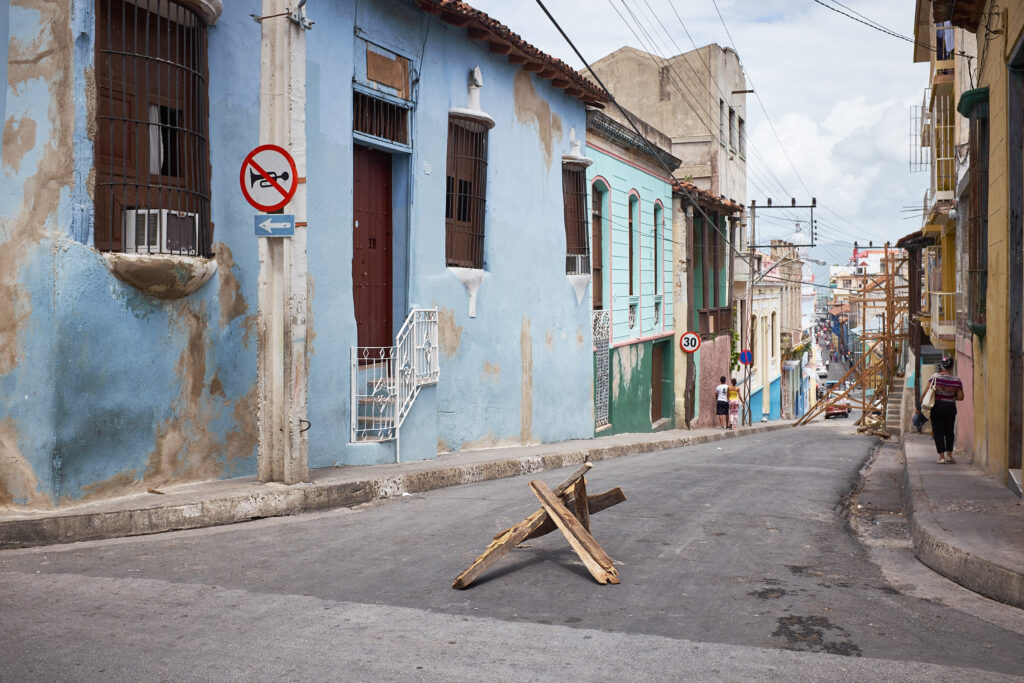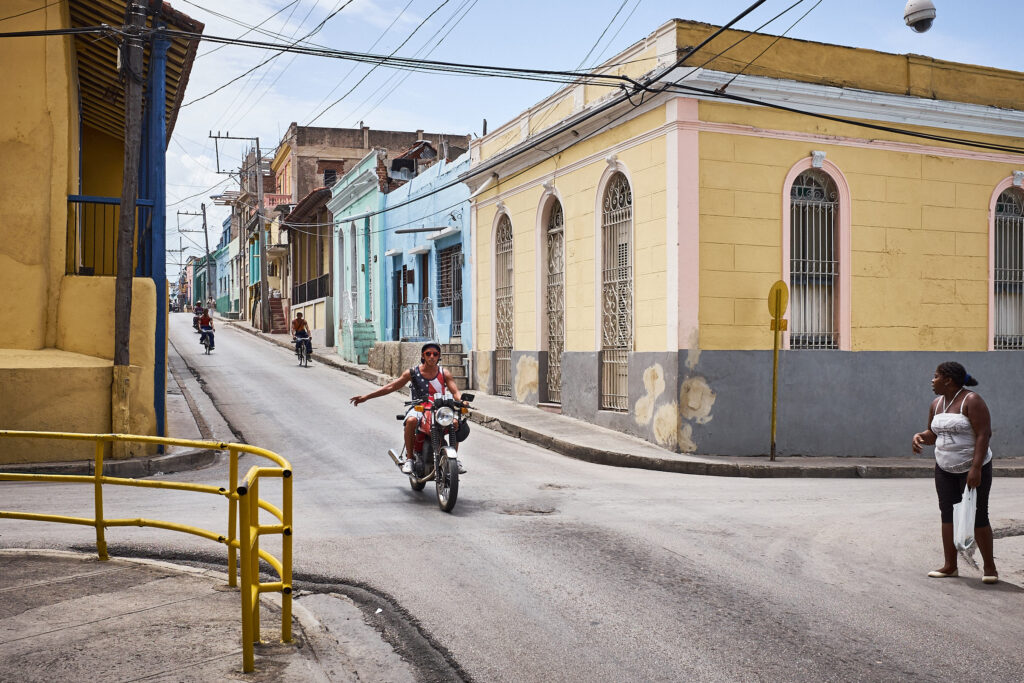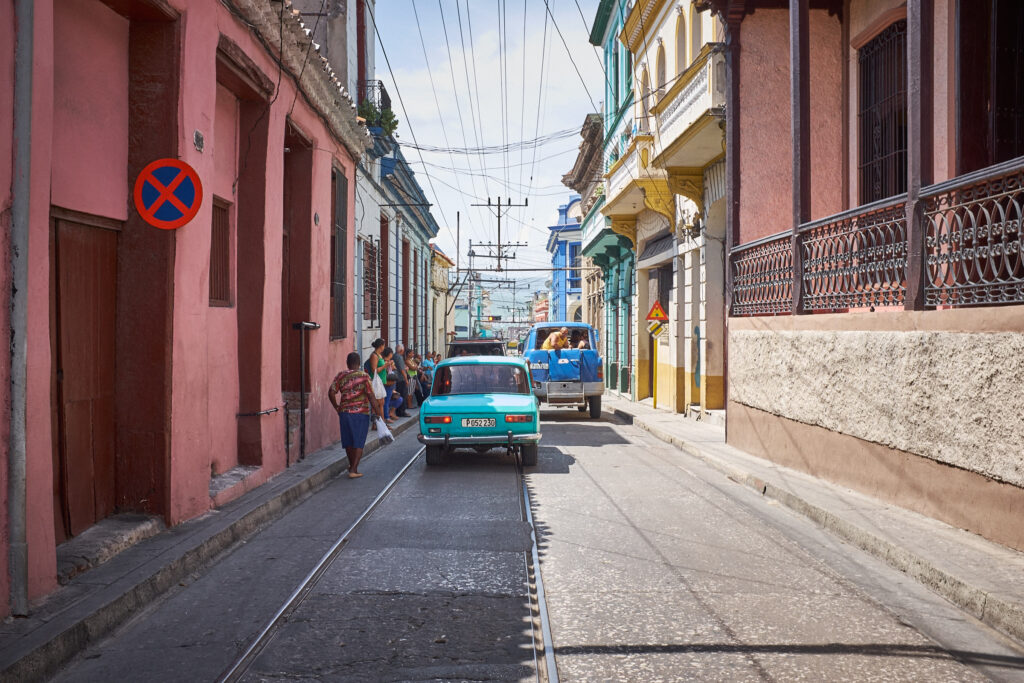Santiago de Cuba is the second-largest city in Cuba and from 1522 until 1589 it was the capital of the colony. Lying to the southeast end of the island, Santiago has a large port with access to the Caribbean Sea through which plenty of trade, slaves and naval battles have contributed to its colourful past.
Santiago is well known for its cultural life and particularly its traditional music. It’s an easy city to walk and as a bonus, live music is played everywhere. I stopped to listen to a band of buskers playing salsa in a small park. The youngest bloke looked 65 years old; music has no age barrier in Cuba. I gave them a few cuc and they ‘personalised’ their performance for me as if I was the only one there. Their music was loud and full of life. I took a few pics and looked for the shade to sit and enjoy the moment.

Onwards, down the hill and on the back roads there’s plenty to discover.



Casa Grand Hotel
Walking further I found the Museo Provincial Emilio Bacardí Moreau, I wanted a quick squiz but a twenty for the entry fee of 2 cuc was too big for them to change, so, as an alternate ‘cultural experience’ I went for a drink at the beautiful, colonial-built Casa Granda Hotel instead. On the terrace, which overlooks the Parque Céspedes, I met with Tony (Harry) then Hilda and Koen arrived a little later.
Adjacent to the Casa Grand and also facing Céspedes Park is the Catedral de Nuestra Señora de la Asunción (Our Lady of the Assumption). Originally built in 1526, it has been destroyed by earthquakes 4 times but looks pretty good now. I suppose at some point in the future it will come crashing down again, Santiago de Cuba is built in an earthquake zone.
San Pedro de la Roca Castle
The early evening brought with it a tour of the World Heritage site of the Fort San Pedro de la Roca Castle, or Castillo del Morro which sits high atop a promontory and protected the Santiago de Cuba Bay from pirates. Having successfully and unsuccessfully fended off pirate attacks and random earthquakes, the fort later housed political prisoners.
Sunset at Fort and dinner on way back then music in town.
Casa de La Trova
Rounding out the night was a visit to Casa de la Trova, the local music hall where locals …. “Pepe Sánchez”, Heredia, Santiago de Cuba.